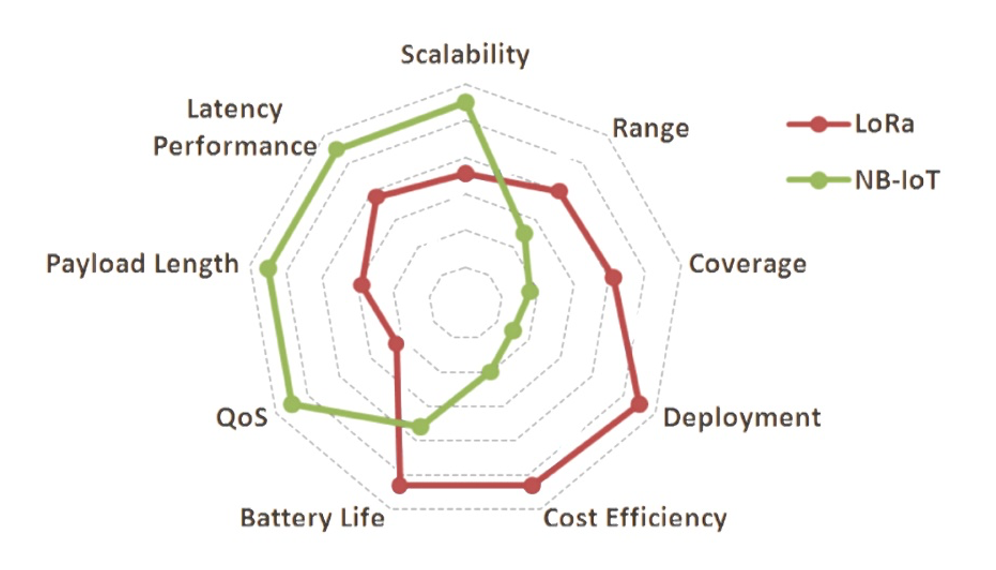Finally, we provide a comparison of the two common IoT connectivity technologies LoRa and NB-IoT in terms of their key characteristics in this section. After a point-by-point analysis of several features, the comparison results are pictorially summarized in Figure 5.1.
Transmission Range & Coverage – LoRa uses Chirp Spread Spectrum (CSS), which is designed for long range and penetration. NB-IoT uses specific mechanisms to extend the coverage. LoRa/LoRaWAN coverage also gets expanded by the community, and not just by network operators (anyone can install a new gateway operating in the unlicensed spectrum). Therefore,LoRa has typically better coverage and range.
Battery Life – LoRaWAN devices can sleep for as little or as long as the application desires, because it is an asynchronous, ALOHA-based protocol. NB-IoT devices consumes additional energy due to the infrequent but regular synchronization messages and the higher energy requirement of OFDM/FDMA protocols. Therefore, LoRa typically consumes less power.
Data Rate, Latency, QoS – LoRaWAN operates in the unlicensed spectrum, where there is more radio interference and noise. NB-IoT operates in the licensed spectrum that is owned and managed by a single network operator. Furthermore, the time-slotted synchronous protocol with OFDM modulation in NB-IoT provides more deterministic operation compared to the asynchronous protocol with CSS modulation in LoRA. Therefore, NB-IoT provides higher data rates, lower latency, and better Quality of Service (QoS) guarantees.
Deployment and Cost – NB-IoT can be deployed by reusing and upgrading the existing cellular network but its deployments are restricted to the area supported by cellular network. LoRaWAN components are easy to deploy and the ecosystem is mature. For initial deployments, LoRaWAN is much more cost effective, although scalability and performance could be an issue for the longer term.

We can summarize the main results from the LoRa vs. NB-IoT comparison as follows:
- When one needs a cheaper connectivity technology with the highest energy/battery efficiency for the devices, LoRA stands out as a more suitable option.
- If on the other hand, quality of service, latency, and scalability are more important for the use case, then NB-IoT is generally a better option.
An important final remark is that this is not a binary decision and one can use a mixture of both technologies in an IoT deployment. That is, IoT applications may employ a collection of heterogeneous devices connected through multiple wireless technologies. The integration is then realized at the application layer, by combining data from heterogeneous IoT devices.